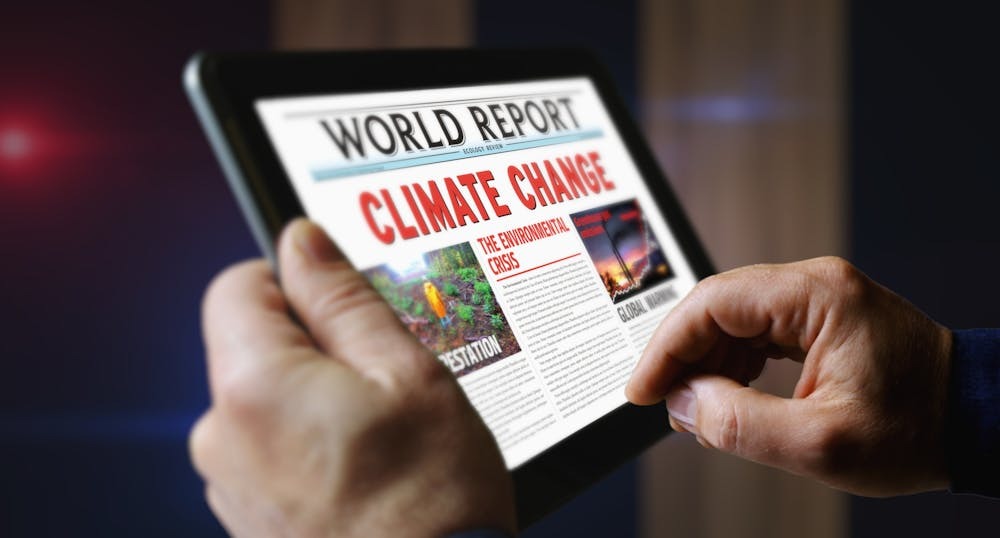How Climate Change Is Covered in the News

Climate change is one of the most pressing and complex issues facing humanity today. As global temperatures rise, extreme weather events increase, and ecosystems face unprecedented stress, the role of news media in covering climate change is crucial. The way news organizations report on climate change shapes public awareness, influences policy debates, and impacts collective action. This article explores how climate change is covered in the news, examining reporting trends, challenges, framing techniques, and the evolving responsibilities of journalism in this critical area.
The Evolution of Climate Change Coverage
Climate change reporting has evolved significantly over the past few decades:
- Early coverage in the 1980s and 1990s was sporadic and often technical, focusing on scientific findings and environmental activism.
- Increased attention followed major events such as the Kyoto Protocol (1997) and the IPCC reports, with more frequent news stories and editorials.
- Recent years have seen a surge in coverage due to more visible climate impacts—wildfires, hurricanes, floods—and growing political urgency.
- The rise of digital and social media has expanded the platforms and immediacy of climate reporting.
This evolution reflects growing recognition of climate change as a global emergency.
Common Themes in Climate News
News coverage of climate change typically addresses several core themes:
- Scientific consensus and data: Reporting on temperature trends, greenhouse gas emissions, and climate models.
- Environmental impacts: Stories on natural disasters, biodiversity loss, sea-level rise, and pollution.
- Policy and politics: Coverage of international agreements, national policies, and political debates.
- Economic implications: Discussions on green technology, energy transitions, and climate-related costs.
- Social justice and equity: Focus on how climate change disproportionately affects vulnerable populations.
- Individual and community action: Highlighting activism, lifestyle changes, and innovation.
These themes provide a multifaceted picture of the issue.
Framing Techniques in Climate Reporting
How climate change is framed influences public perception and engagement:
- Crisis framing: Emphasizes urgency and existential threats, mobilizing concern but risking fear or helplessness.
- Scientific framing: Focuses on data and expert analysis, building credibility but sometimes perceived as abstract or inaccessible.
- Economic framing: Highlights costs and benefits of action or inaction, appealing to policymakers and businesses.
- Moral and ethical framing: Frames climate change as a matter of justice and responsibility, inspiring activism.
- Local vs. global framing: Localizes impacts to connect with audiences or emphasizes global cooperation and scale.
Balanced framing combines these elements to inform and motivate diverse audiences.
Challenges in Climate Change News Coverage
Journalists face several obstacles when reporting on climate change:
- Complexity and uncertainty: Explaining scientific nuance without oversimplification is difficult.
- Political polarization: Climate change has become a divisive issue, influencing coverage tone and reception.
- Misinformation and denial: Countering false claims requires rigorous fact-checking and context.
- News fatigue: Repetitive or negative stories may lead to audience disengagement.
- Limited resources: In-depth investigative climate reporting demands time and expertise often constrained by newsroom budgets.
Addressing these challenges is key to effective coverage.
The Role of Solutions Journalism
To counter despair and promote engagement, many outlets incorporate solutions journalism:
- Reporting on successful climate mitigation and adaptation projects.
- Highlighting technological innovations and policy breakthroughs.
- Sharing stories of community resilience and environmental stewardship.
This approach balances problem-focused narratives with hopeful perspectives, encouraging proactive responses.
The Impact of Visual and Multimedia Storytelling
Climate change benefits from compelling visuals and multimedia:
- Infographics and data visualizations make complex data understandable.
- Video documentaries capture vivid images of environmental impacts.
- Interactive maps and timelines engage users in exploring climate trends.
- Podcasts and social media amplify voices of scientists, activists, and affected communities.
Multimedia enhances reach and emotional resonance.
Engaging Diverse and Marginalized Voices
Inclusive climate reporting recognizes that climate change affects communities differently.
- Indigenous peoples, low-income populations, and developing nations often bear the brunt of environmental harm.
- Covering these perspectives highlights equity and human rights issues.
- Empowering marginalized voices enriches public understanding and policy debates.
Diversity in storytelling fosters a comprehensive and just dialogue.
The Influence of Digital Platforms and Social Media
Digital media have transformed climate news dissemination:
- Social media accelerates information sharing and grassroots mobilization.
- Online platforms allow direct communication between scientists, journalists, and the public.
- User-generated content and citizen science contribute to monitoring and awareness.
- However, digital spaces also facilitate misinformation spread and echo chambers.
Navigating these dynamics is essential for trustworthy climate communication.
The Future of Climate Change Coverage
Looking forward, climate journalism is poised to:
- Leverage emerging technologies like AI and virtual reality for immersive storytelling.
- Expand cross-border collaborations to cover global climate interdependencies.
- Increase focus on climate justice and intersectionality.
- Strengthen media literacy initiatives to build critical audience engagement.
- Advocate for sustainable practices within media organizations themselves.
These developments promise more effective and responsible reporting.
Conclusion
news coverage of climate change plays a pivotal role in shaping public discourse and action on this existential issue. Through evolving themes, diverse perspectives, innovative storytelling, and a commitment to accuracy and inclusivity, journalism informs, empowers, and inspires societies worldwide. As the climate crisis intensifies, robust and thoughtful media coverage will remain indispensable in fostering a sustainable future.



